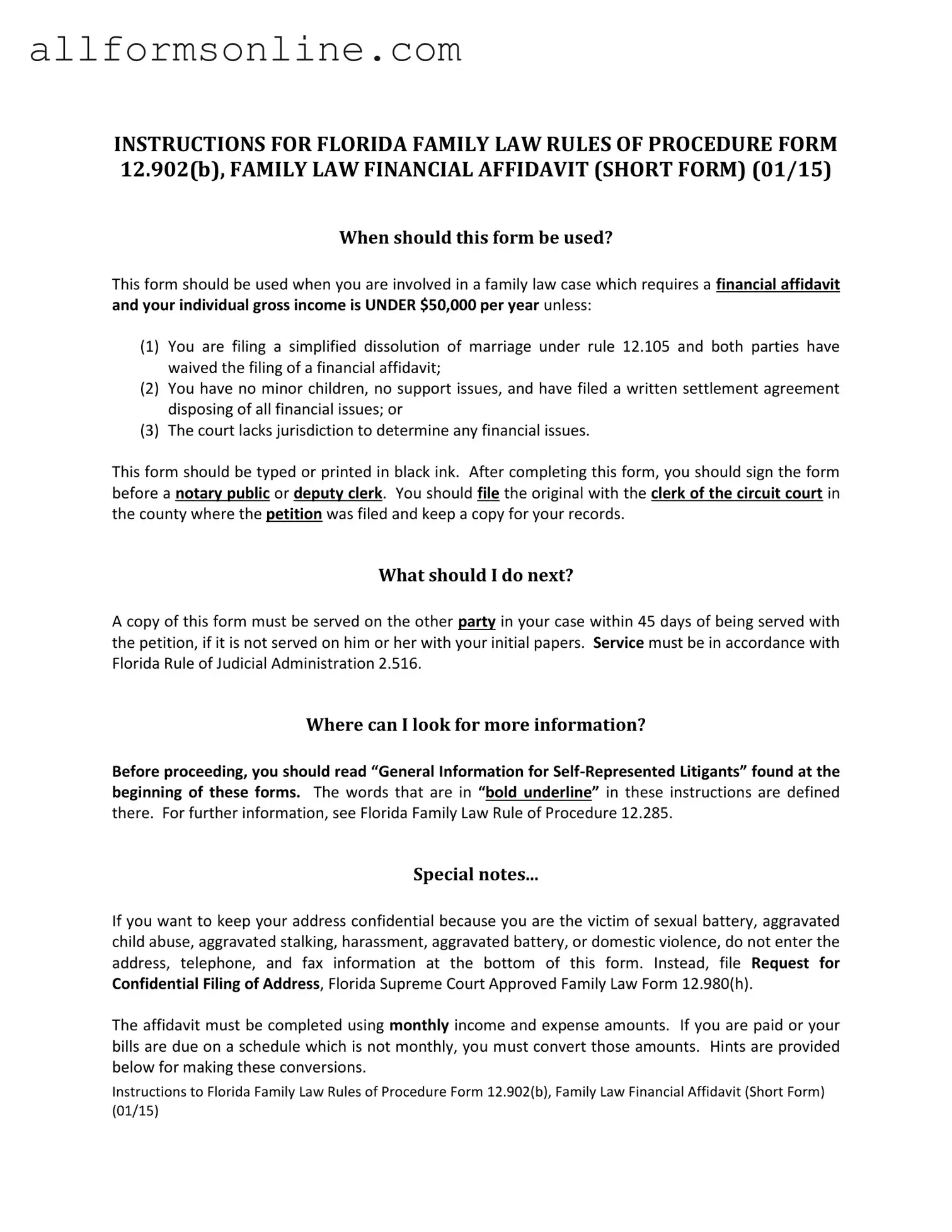Free Florida Financial Affidavit Short 12.902(b) PDF Form
The Florida Financial Affidavit Short 12.902(b) form is a document used to disclose an individual's financial information during legal proceedings, such as divorce or child support cases. This form helps the court assess financial situations accurately and equitably. To ensure you meet all requirements, fill out the form by clicking the button below.
Fill Out Your Form Now
